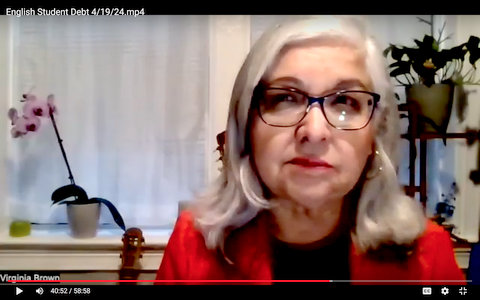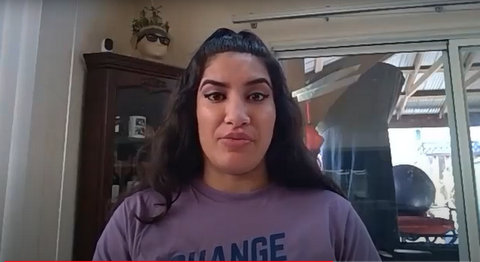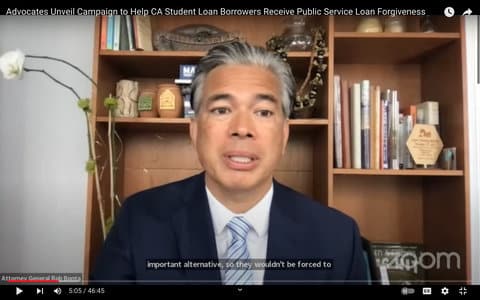
06 Mar California Gives Students More Time to Apply for College Financial Aid

This year’s priority deadline for college financial aid in California is April 2. (Photo by Element5 Digital on Unsplash)
By Malcolm Marshall
California has extended its priority college financial aid deadline by one month, partly because of federal delays and fears over immigration policy.
Students who plan to attend four-year institutions originally were told to submit the Federal Student Application for Federal Aid or California Dream Act Application by March 3 to receive the best possible aid packages. Now, they have until April 2. (Community college students are told to apply by Sept. 2.)
The extension comes in response to delays in releasing the FAFSA — it usually comes out each Oct. 1 but didn’t this time until Dec. 1 — and in processing applications, a significant drop in submissions, and concerns among undocumented students about immigration enforcement. According to the California Student Aid Commission, FAFSA applications from high school seniors have fallen by 25%, representing a loss of 48,000 students, compared with last February.
The FAFSA was delayed for the last school year as well, which led to long waits for financial aid offers, without which many students could not decide where to attend or even know where they could attend.
Daisy Gonzales, executive director of the CSAC, discussed the recent extension and addressed concerns at a news briefing hosted Feb. 27 by Ethnic Media Services. The briefing also featured CSAC Chair Catalina Cifuentes; Keiry Saravia, a student commissioner in the CSAC; and Shawn Brick, associate vice provost for student financial support at the University of California Office of the President.
Gonzales emphasized the importance of the extension in ensuring equity in higher education.
“We know that there are many students and families from vulnerable communities…undocumented students, students from mixed-status families who are weighing right now, whether they can apply for financial aid or whether higher education is even for them.”
She said she wanted all students in California to know that “higher education is worth it, and that they are worthy. It will make a difference in their lives and the lives of their families.”
For mixed-status students and eligible non-citizens, Gonzales says it’s crucial to consider your unique family situation. Students have the option to complete a FAFSA, which will provide them eligibility to access federal financial aid in addition to state and institutional aid, but she stressed that the California Dream Act Application is a viable alternative for undocumented students and mixed-status families.
“While we cannot speculate on how the federal administration may use the information that is collected through that application,” said Gonzales, referring to the FAFSA, “here in California, you have choices.”
Information provided in the California Dream Act Application is held by the state and “will only be used to determine eligibility for state and institutional based financial aid,” she said.
Gonzales also shared her personal experience as the daughter of immigrants and someone who grew up in foster care.
“I wouldn’t be who I am now without having access to financial aid,” she said. “I was able to access financial aid at the age of 17, go to community colleges, eventually transferred to a four-year institution, where I was able to get access to both Cal Grants and the Chafee Grant here in California. All the odds were against me, and if it wasn’t for California’s financial aid system, I know that I wouldn’t be who I am.”
Catalina Cifuentes, also the executive director of college and career readiness in the Riverside County Office of Education, said the COVID pandemic brought a big decline in financial aid applications, but what they’re seeing now is even more concerning.
“It’s the amount of misinformation being sent… to students and families,” Cifuentes said. “I’m worried that by the time these students and families realize they should have applied, they could have gotten financial aid, they could have gotten free tuition and fees covered at one of the institutions, it’s too late.”
She emphasized the importance of clearing up misconceptions and making the process more understandable to students. She also urged K-12 leaders to dedicate more time to connecting with families and guiding them through the application process.
Saravia, a junior at Cal State Northridge, is a first-generation college student raised by immigrant parents. She hopes to attend law school and eventually become an immigration and criminal lawyer.
“Without financial aid like the Cal Grant, I don’t know if I would even be in the in the position I am right now. Financial aid is the biggest reason as to why I’m able to attend the CSU I’m currently at.”
Saravia also believes misinformation is one of the biggest barriers preventing students from applying for financial aid.
“Right now, we are getting a lot of misinformation, even for students here at CSUN [who] have already submitted our FASFA, like maybe once or twice,” she said. “We’re still getting a lot of misinformation about whether we’ll be eligible again, whether it’s even feasible, whether our information is going to be safe.”
She added that students from immigrant or undocumented backgrounds are often afraid to apply for aid.
“I think that has deterred a lot of students from reapplying but also has deterred a lot of high schoolers from even considering applying,” she said.
Also, undocumented people are not eligible for federal student aid, but they can request state aid with the Dream Act Application, which is also open to U.S. citizens and green card holders who don’t want to fill out the FAFSA because their parent(s) or spouse are undocumented.
While the extension has given students more time to apply for aid, Brick of the UC system urged them to submit their applications as soon as possible.
“The sooner you file, the sooner we can tell you the full range of financial aid you’re eligible for,” he said.
In addition, the University of California offers its own financial aid program. This year, the university is providing over a billion dollars in grants and scholarships across its nine undergraduate campuses for low- and middle-income students.
“The University of California has moved our own financial aid priority filing deadline to match the state of California,” Brick said. “That means that students who meet the state’s deadline will also be considered for all the full range of University of California financial aid.”
And no matter where it comes from, student aid can be used for any education-related expenses, not just school fees.
“It’s also important to point out that financial aid is about more than covering tuition,” he said. “There’s financial aid available for students to help cover other costs that they face while they’re enrolled in school. So that includes food, housing, transportation, books and supplies.”
Current and future college students can apply for federal or state financial aid or get more information by visiting studentaid.gov, csac.ca.gov/apply or dream.csac.ca.gov.






No Comments